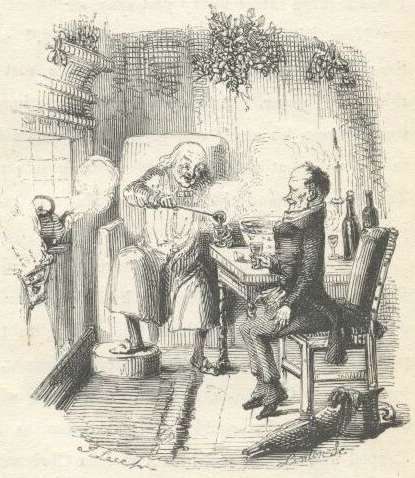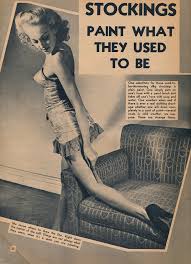How do you view the thrifty? Sensible or like one of Dickens’ most famous characters, Scrooge. Perhaps this will help you to make up your mind.
Thrift For Thought
I first became interested in thrift when my late uncle sagely announced that he never let a grocer weigh the tomatoes until he insisted that the stalks be removed. If that seems extreme, it soon becomes obvious that it is nothing to what has gone on in the past.
Thrift in the nineteenth century was a well-rehearsed skill from the highest seat of society down to the lowest. One of the perks of being a ladies’ maid was getting the mistresses’ gowns whilst other unused pieces of cloth would be collected together in a ‘rag-bag’ and household servants would often be allowed to keep these. They would be passed on to a street buyer, rag and bone man or rag and bottle shop. Linen would be separated to be sold to a paper manufacturer as paper was made from linen and rag well into the nineteenth century.
Used tea leaves would be utilised to clean carpets and then passed onto cleaning ladies who sold them to dealers. With a bit of artificial colour thrown in, the dealer would then put the tea leaves (which had been on the carpet) on sale as fresh tea.
Who claims the fat
Each servant appeared to have their own expectations of the booty they could claim and the fat from the roasted animals was earmarked by the cook. The dripping, as the fat was called, would be used like butter by the poor.
Even bones were sold onto the rag and bone man for fertilizer and household ashes and dust were marketed to help make bricks. It seems that nothing was thrown away, as soot from chimneys was vended for manure and insect killer.
As people were not aware of how germs were transmitted, it was a regular practise for the very poor to collect dog manure or ‘pure’ as it was politely called. This was sold to tan yards for the processing of leather for the soft kid gloves so beloved by the rich.
Mrs Child, an American housewife, advised in 1828 that after old coats and pantaloons for boys had been cut up and were no longer capable of being converted into other garments, the housewife should slice them into strips and use the leisure moments of children or domestics in sewing and braiding them into door mats.
Waste is an act of treason
By 1915, thrift in the home was the order of the day. “Waste is an act of treason when every penny saved helps to save your country.” This reminder was on the bill announcing the opening of the Patriotic Thrift Exhibition at Hamilton Rooms, Park Street, Bristol 25 – 30th November 1915. The exhibition was organised by the National Union of Women’s Suffrage Societies who offered a range of lectures on domestic subjects which represent war service in the home.
A familiar theme concerning thrift is that of the wealthy preaching to those less well off. At the Exeter Society in 1923, the president, Lady Rosalind spoke on women’s extravagance. She warned of the ‘melancholy spectacle’ of cheap pianos, cheap jewellery and cheap furs bought by women who could not afford them.
During World War II, women found it difficult to get hold of stockings. Stockings were made of silk as nylon wasn’t invented until 1938 and initially only on sale in America from 1940. As silk was used to make parachutes for the wartime effort, silk stockings became a rare commodity as both manufacturers and retailers charged high prices and asked for too many clothing coupons for them.
Snatched the stockings
In 1944, a bus conductress from Truro found herself in court after being thrifty over silk stockings. On June 28th, she acquired two pairs from a bus driver without surrendering coupons. Captain Craze for The Board of Trade snatched the stockings for disposal but they were later seized by the Customs and Excise Department. Craze opposed this measure saying that he would have to take further instructions from The Board of Trade. The case was adjourned for a fortnight; thrift can end up causing a lot of expense.
It seems that thrift is here to stay.









Very interesting. I especially liked the painting of the line to make bare legs seem like they are wearing stockings 🙂
Thanks Madison. I love social history.
A very interesting post…the paragraph about recycled tea leaves was ghastly but so interesting read. I never knew that they were used to clean carpets.
I know exactly what you mean Sammi and although it makes my eyes bulge at times, it never fails to delight me in a ghoulish way.
Me too 🙂
Great taste you see, Sammi.
Definitely 🙂
Thank you, Sammi.
Loved this post. The Imperial War Museum’s book shop in London is a great treasure trove for information about past thrift (WWI and WWII). The little rags left over from making servant’s uniforms or their ladies’ outfits or household curtains were often turned into children’s toys, since most people couldn’t afford to buy toys. Also, it’s amazing what people used to exchange at special places in WWII, children’s clothing and toys, but also pretty much everything else. Nothing was thrown away and whole streets would collect household waste like potato peelings and put them into a special bin; the contents would feed their communal pig, which they were encouraged to keep by the Ministry of Food. Any kind of food that was even vaguely useable for feeding chickens would also be saved by thrifty householders. It breaks my heart when I see the amount of food thrown away every single hour in fast food outlets…and outside of them, as people thrown away unwanted chips, burgers etc. It should be compulsory for such people to go on a two day fast…to teach them what hunger’s really like.
Yes Maria, I also find this stuff fascinating. Don’t get me started on fast food outlets – I am totally anti them.
Love it. In my family the queen of thrift was my mother and my oldest daughter is pretty much the same.
i think we have to be especially in these days. Have to go, I’ve got a pile of old knickers that need cutting up for dusters. Ha Ha.